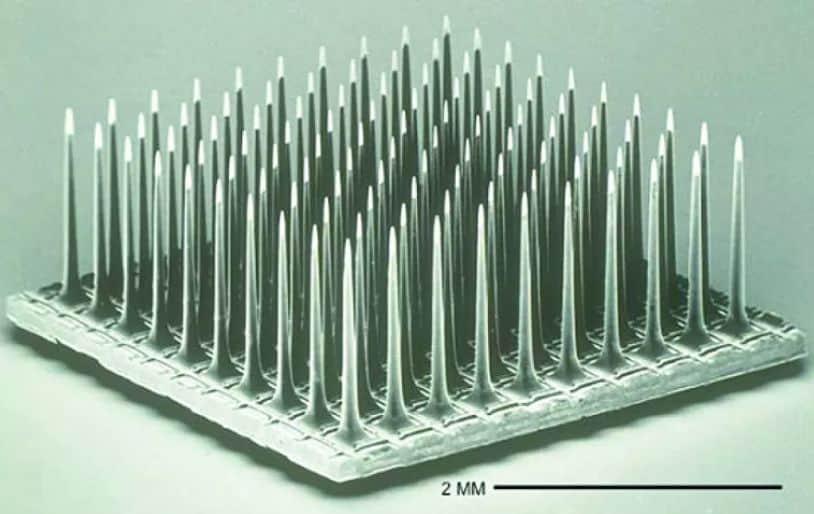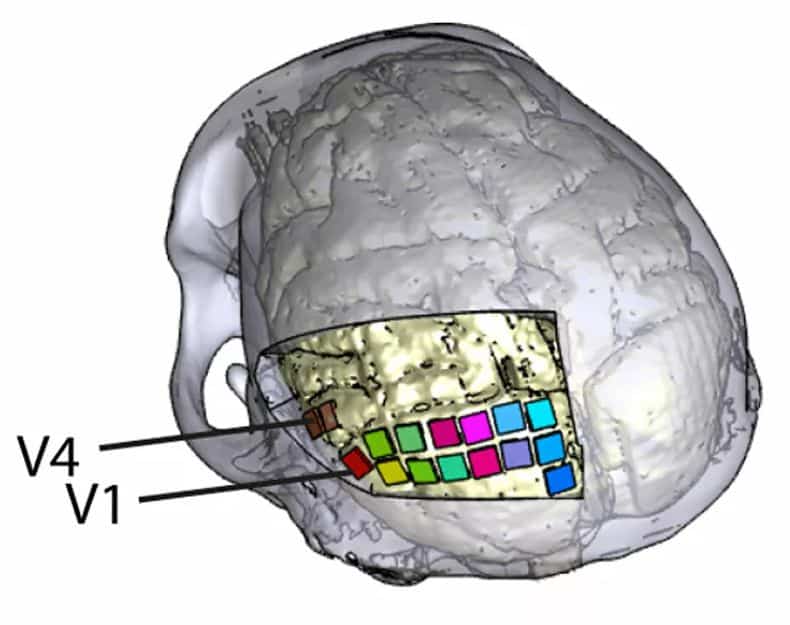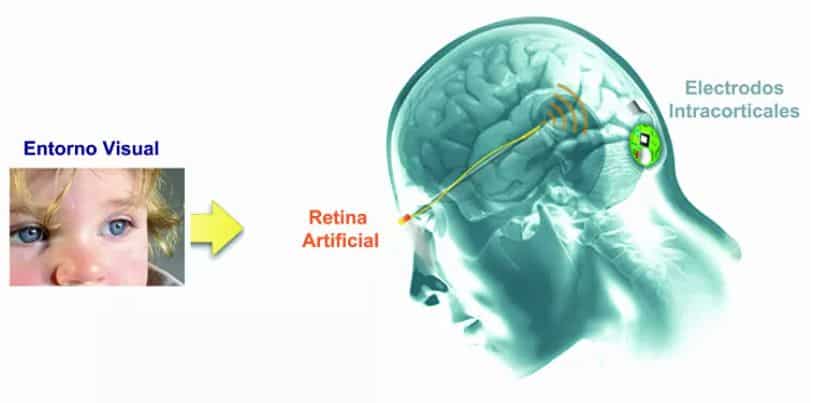Electrical stimulation could be the answer to blindness. A study has made two monkeys able to see without using their eyes. To do this, scientists have used high-resolution implants to generate images interpretable by the brain.
The feeling of lost in space. The fear of stumbling. Almost constant dependence on a support, whether in the form of a stick, guide dog or caretaker. Unfortunately, in some cases, isolation. A difficult list to enumerate the consequences and perceptions that blindness can cause. A problem that makes it difficult to carry out any task. From shopping to cleaning a shelf. According to people who suffer from it, “you just get used to it.” A process of adaptation faced by the millions of blind people around the world. According to the World Health Organization, 2.2 billion people are blind or have vision problems. About 1 billion cases could have been prevented with proper treatment.
Blindness is scary. To overcome it, hundreds of scientists seek to develop systems that can restore the ability to see the world again, but for the moment, no success. Among them is Eduardo Fernandez, director of the Neuroprosthesis and Visual Rehabilitation Unit of the Bioengineering Institute of the Miguel Hernández University. The doctor has been studying this subject for more than 30 years. The last work in which he has participated is an investigation of the center that he directs together with the Vision and Cognition group of the Dutch Institute of Neuroscience. Both together have taken another step towards a future solution.
They did it after testing a new brain device on two monkeys. Neuroprostheses installed a part of the anatomy responsible for processing the information that comes from the retina in the visual cortex of primates. In each animal, the researchers implanted 16 electrode arrays, each made up of 64 needle-shaped silicon electrodes 1.5 millimeters long. In total, 1024 electrodes to give small electric shocks.
“They are very short current pulses. They are carried out with a net charge of 0, injecting 100 microamperes from above and 100 microamperes from below. They are very fast, last for microseconds. Administering a constant load to the brain can have very negative consequences”, explains Fernandez.

Using these electrical impulses, the brain can create interpretable images. Thanks to this experiment, the scientists verified that the macaques were able to see lines, shapes, points and letters. All this without using their eyes. The monkeys were not blind, but they could not distinguish whether what they perceived was a real image or the result of an electrical stimulus.
“The retina encodes the environment that surrounds us and converts it into electrical signals that the brain understands. The goal of the prosthesis is to be able to generate these signals,” says the researcher.
However, it is not the first project that works with electrical stimulation of the brain to generate images. However, they have used more electrodes than most to give them greater definition. The results of the experiment, published in the journal Science, show a solution never reached. Partly, because of the number of electrodes, but also because of the shape and size. Unlike other research, experts have influenced deeper layers, which is why electrodes simulate small needles, which penetrate inside the brain to come into direct contact with neurons.

“It should be remembered that neurons are not on the surface, but that information reaches layer four of the brain, about a millimeter or two deep,” the scientist says.
In addition, the penetrating figure of these electrodes favors “two-way communication”. Not only do they emit discharges, but they collect information provided by neurons. More than that, certain modules have been able to predict the amount of current required for the detection of points of light. This discovery would help the calibration of future prostheses, not counting the valuable knowledge that would be gained about neural behavior and state.
- Does This Mean We Stopped Being Animal and Started Being Human Due to ‘Copy Paste’ Errors?
- The One Lifestyle Choice That Could Reduce Your Heart Disease Risk By More Than 22%
- Aging: This Is What Happens Inside Your Body Right After Exercise
- Immune-Boosting Drink that Mimics Fasting to Reduce Fat – Scientists ‘Were Surprised’ By New Findings
- Gun Violence in America: What They Don’t Talk About at the Debate
State of development
The devised device consists of two parts: the Utah electrode arrays placed at different points in the visual cortex and an artificial retina that captures stimuli from outside. Their joint action would make it easier for those who can’t see it day by day.

“In the future this could help many people. We are not talking about revolutionizing the sector, seeing colors … But this technology could help many people in relatively simple tasks. It would provide little information of the visual field. The simple fact of seeing lights or characters large on a computer would be of great help”, assures Fernandez.
It is a sign of optimism for all those people who suffer from degeneration of the optic nerve or retina, but whose visual cortex is in good condition. However, Fernandez insists that, “despite being promising,” the study is in preliminary stages.
“I don’t want to generate false expectations. We can’t say the blind are going to see again. It is true that we are gradually approaching, but regaining our sight is not something that we will witness in two or three years. We need to move forward little by little,” says University researcher Miguel Hernandez.
There are still many points to refine. For example, the prototype works with a cable and has a useful life of one year. The team works to make it wireless and last at least a decade. In addition, it must be tested on human beings.
According to Fernandez, they have authorization to install electrodes on people. They even already have volunteers. However, the project was stopped, affected by the health crisis caused by the coronavirus pandemic.
“We plan to implant a small sample of 100 electrodes. It would be about the size of a fingernail,” he says.
“There are still many unsolved questions. We have to carry out clinical trials in humans to be able to take the next step,” Fernandez says.
He emphasizes that there is still a long way to go. Both for systems based on electrical stimulation and for regenerative medicine with cells, another possible way to restore sight.
